
New Roses Flowering In The Garden
Hello friends,
And welcome to the last blog post of the year. Today I thought I'd share with you the new rose bush varieties flowering in the garden at the moment, that I've been waiting impatiently to flower ever since I planted them last winter (and even early this month in one case...).
First up we have my new 'Cuppa Tea' floribunda rose bred in New Zealand by Bob Matthews, from his popular for picking rose 'Cappuccino'.
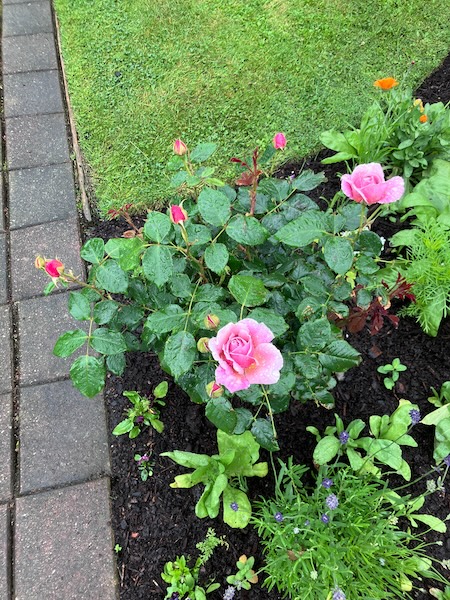
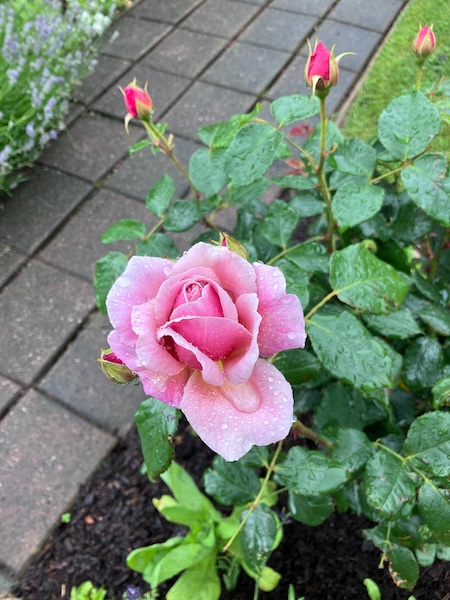
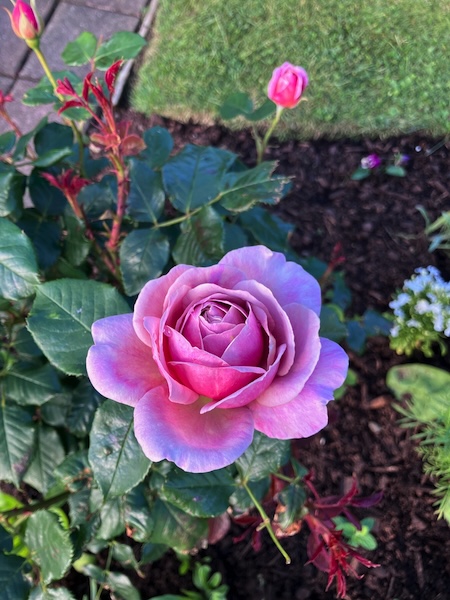
I'm so pleased to have purchased this new rose variety this past winter, the muted pink/purple/bronze shading is just so stunning, and is unlike any other rose colour I've ever seen. I can't wait for her to be covered in flowers all throughout the summer.
Next up we have my new climbing rose Azubis. This is the second Azubis rose bush that I have bought this year, the original one was wind blasted during the big North Westerly storm we had in October, and then it slowly died over the weeks afterward, no matter how hard I tried to save it. Luckily, the garden center I purchased it from had one Azubis bush remaining in late October, so I picked it up and planted it straight away into a more sheltered part of the garden. Azubis is a beautiful climber, producing large lilac blue blooms with a huge fragrance.

My Azubis rose bush may be very small at the moment, but she has already flowered once, and her single lilac bloom is huge and smells like heaven. I can't wait for her to grow up and cover our back garden fence in years to come.
And finally we have my newest rose, Chawton Cottage, another climbing rose, bred in England by Harkness Roses, and named for Jane Austen’s House which is now a museum. Chawton Cottage has sensational pearl pink blooms with a distinctive raspberry purple eye. These unique flower clusters are delicately fragrant and fantastic for picking.
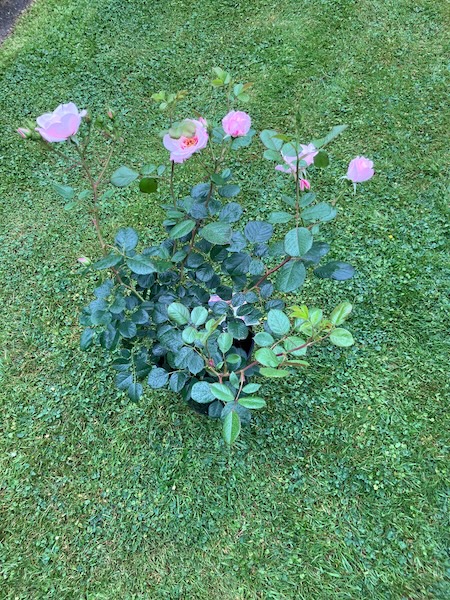
I was walking through our local Mitre 10 when Chawton Cottage caught my eye. She was flowering with multiple blooms in early December. Her unusual single flowers with a pearl pink outer flower and a deep raspberry inner, was just stunning, and bees swarmed around her. Before you could blink an eye, I had Chawton Cottage in my arms, and handed over my debit card to the cashier.
I bought her home and wandered around the garden with her until I found the perfect spot for her, up against our trellis fence at the end of the driveway.
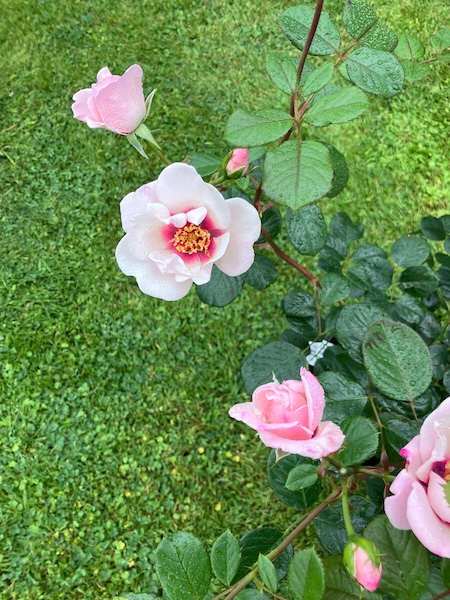
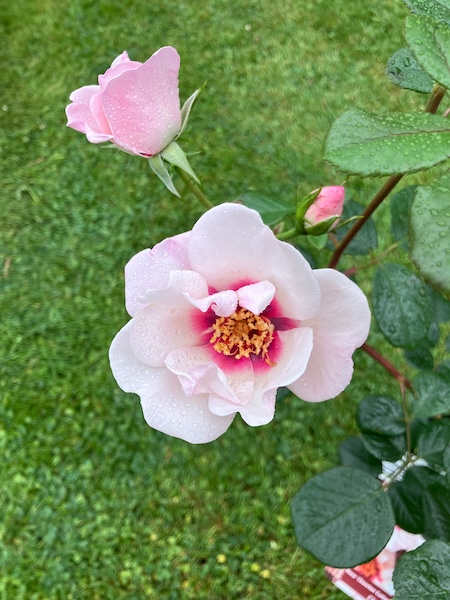
I had to do some pruning to get her to fit up against the trellis, and over the coming years I will trail her along and up the fence line to produce a wall of flowers at the end of the driveway.
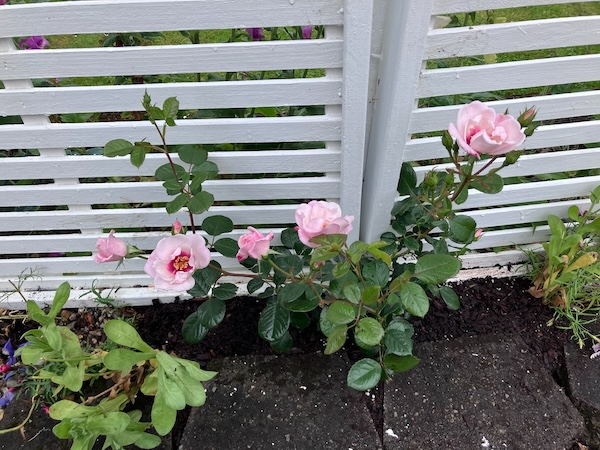
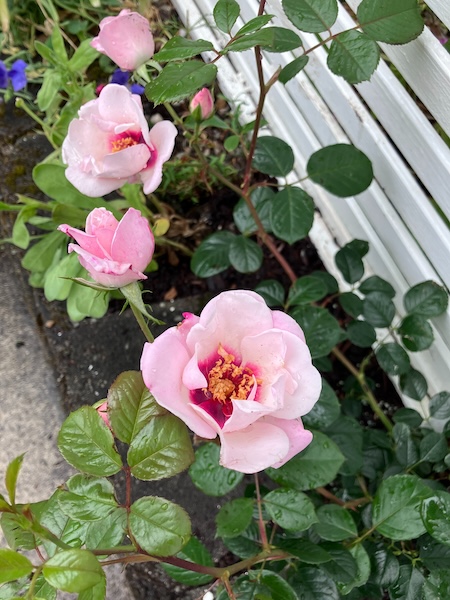
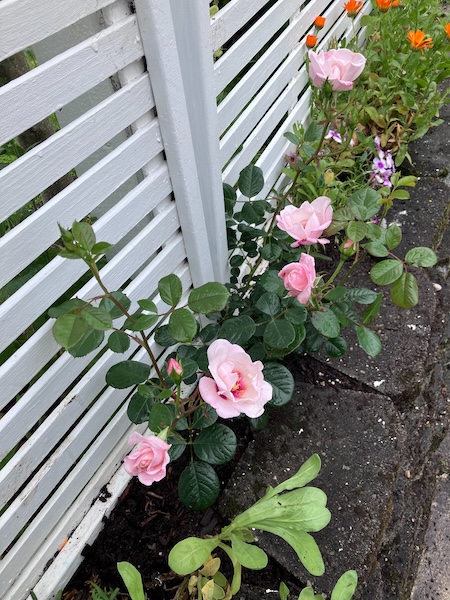
She just looks so pretty in pearl pink and green and raspberry up against the trellis, adding a lot of joy to a space that has been difficult to garden in over the years.
I hope you enjoyed a look at my new flowering rose varieties from this year. And I hope you have a wonderful Christmas and New Year period, and I'll see you again soon in January 2026...
Have a wonderful day
Julie-Ann
Want to discuss my post? Feel free to chat with me on Instagram or Mastodon or Bluesky, and now also Facebook.
New Peonies and a Rose Bush
Hello friends,
Recently I purchased some wish list plants for my garden, three peonies, and a recently released rose bush.
When NZ Bulbs released their peonies for the 2025 - 2026 season, I bought Duchesse de Nemours, Dr Alexander Fleming, and Sarah Bernhardt.
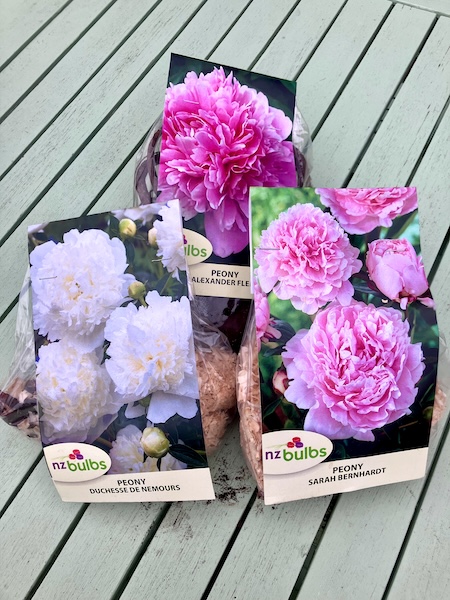
Duchesse de Nemours has ivory white double flowers and the sensational scent of Lily of the Valley.
Dr Alexander Fleming is a double, sweet smelling, pink peony with strong stems and a very good vase life. A very reliable peony variety for cutting.
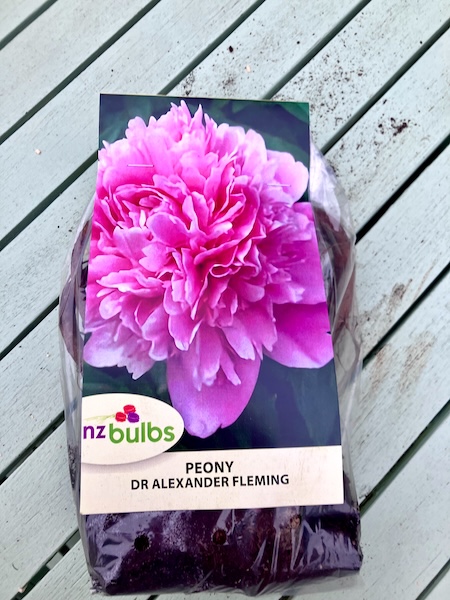
And finally Sarah Bernhardt has classic double blooms of deep pink petals, which are lighter toward the edges, and has occasional flecks of raspberry throughout.
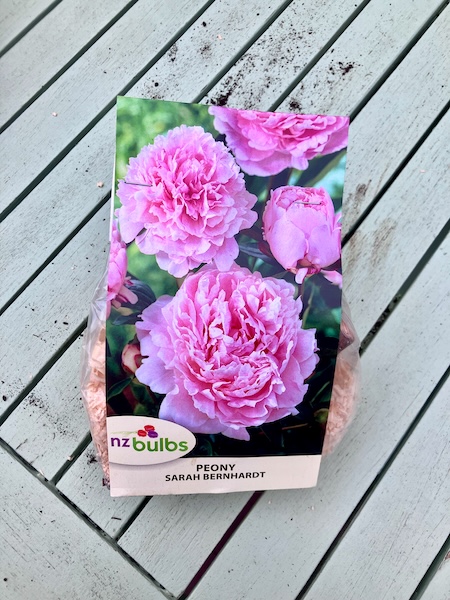
I also recently bought the floribunda rose bush 'Cuppa Tea' from our local garden centre. 'Cuppa Tea' was released for the first time in 2024 as a pre-order online, and it was sold out before it even reached garden centres that winter. I was disappointed to not get one when it first was released, and was pleased to find out our local garden centre had one available for me to buy this year.
'Cuppa Tea' floribunda rose has clusters of antique platinum blooms open into changing shades of warm lilac hinted with lavender pink. Bushy, healthy growing habit with
mid-green foliage. It was bred in New Zealand by Bob Matthews from his popular for picking creation 'Cappuccino'.
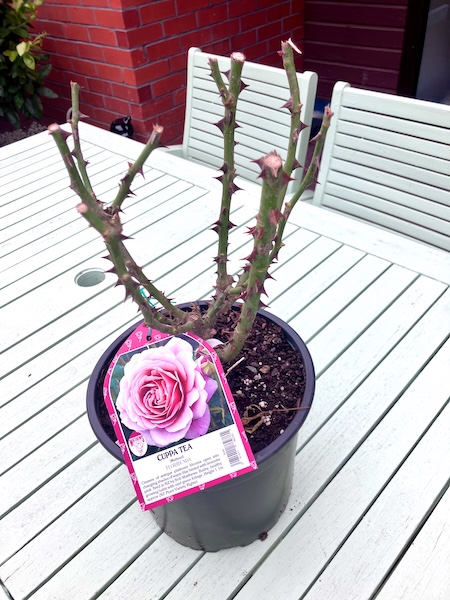
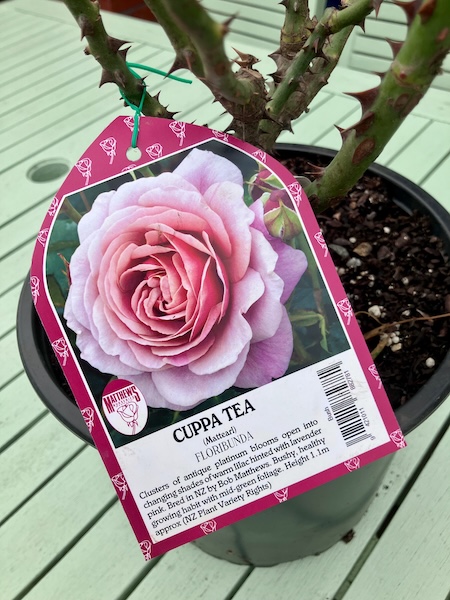
Now having acquired both peonies and a new rose bush, the problem was where to put them...but luckily I had an idea about that.
At the very front of garden alongside the driveway was a small section of garden which had two problematic plants, a rhododendron and an azalea. Routinely while growing, they impinged into the driveway, and make it too narrow for us to drive our car down the driveway without brushing up against them with our car. I'm also not fond of azaleas and rhododendrons, so I was more than happy to dig them out over a number of days.
It was a battle to remove them, but it was finally done. After removing both plants, I added compost to the soil and then dug it over.
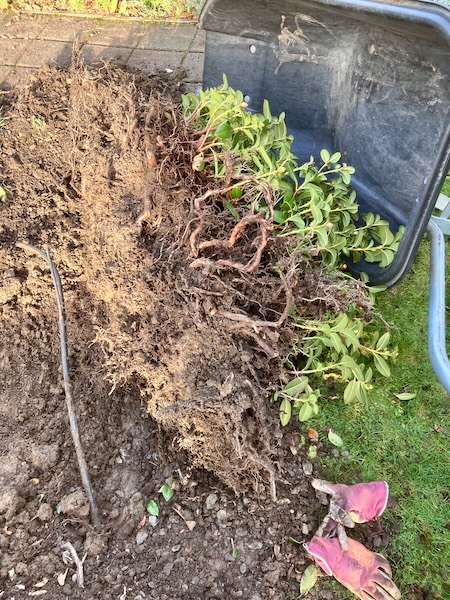
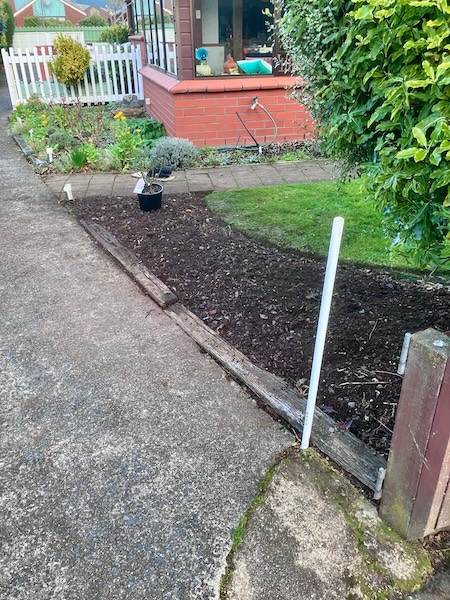
To that space I placed the 'Cuppa Tea' rose bush and the Sarah Bernhardt peony off center, so they stayed well far away from the driveway.
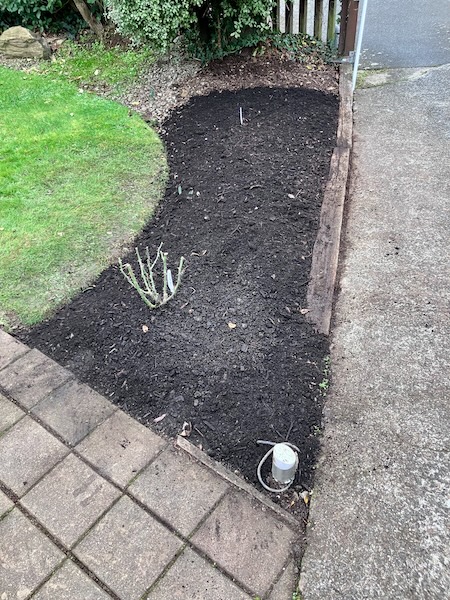
To even the garden bed out, I then dug back into the lawn by 10 cm, to increase the size of the front garden area. If I had to choose between more lawn, or more garden to work with, I'll always choose more gardening space.

After removing the turf, I then planted out the Duchesse de Nemours and Dr Alexander Fleming peonies into the new space in the front garden.
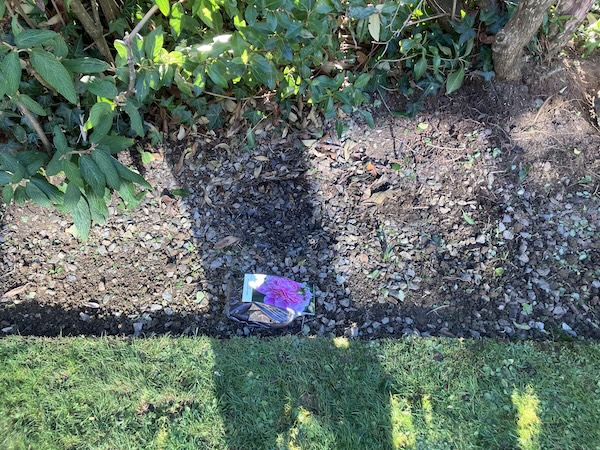


With that all done, there is nothing do do but wait for spring, for both the peonies and rose bush to start growing. There is also more space now for other plants to be planted into the front garden. And as for the space between the Cuppa Tea rose and the Sarah Bernhardt peony, I plan to plant two dahlias when they arrive in spring.
Have a wonderful day
Julie-Ann
Want to discuss my post? Feel free to chat with me on Instagram
or Mastodon or Bluesky.
Processing Damask Rose Flowers For Rose Water and Essential Oil
Hello friends,
And welcome to 2025 on my blog. I did a bunch of stuff over the Christmas break, so in the coming weeks you'll see what I got up to crafting and gardening wise during that time. One of the things I got up to in November and December, was to harvest, and then process my own damask rose flowers.
Damask roses hail from Syria, and their flowers have been used to make rose essential oil and rose water for thousands of years, for use in both perfumes and food. In New Zealand, damask rose plants are hard to come by, and it took me a few years to get hold of two rose bushes from small, specialty rose growers. The two varieties of damask rose bushes in my back garden are Duc De Cambridge and Isapahan.
Duc De Cambridge.
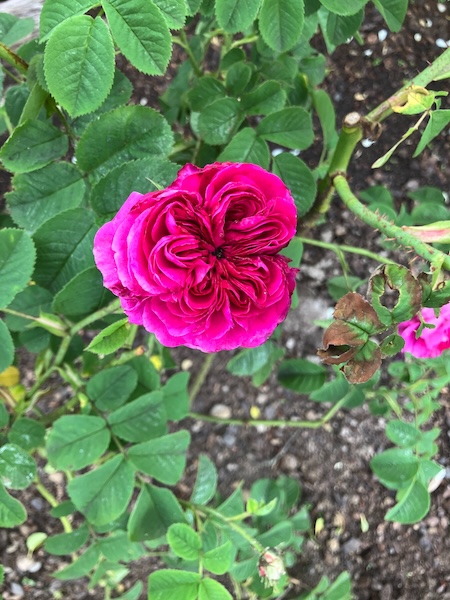
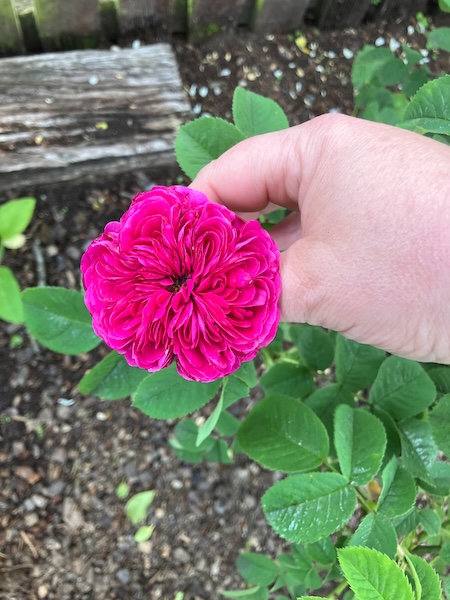
Isapahan.
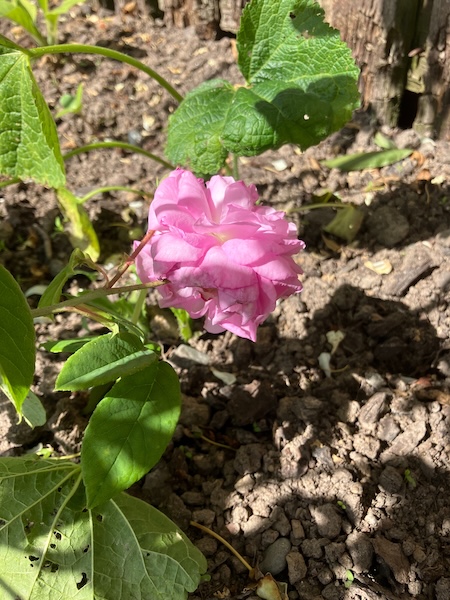
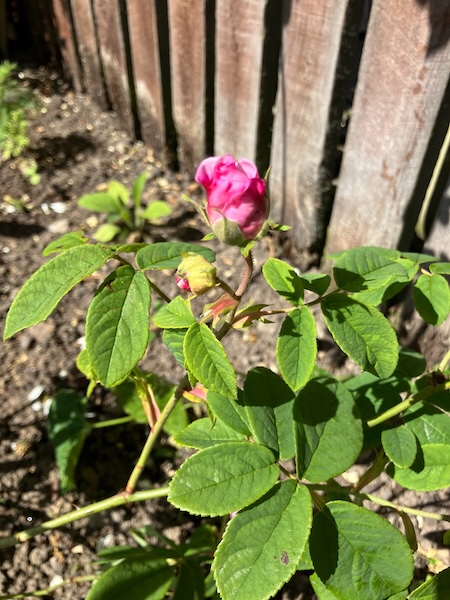
Damask roses only flower once in spring, and their flowering happens over the course of a month. After some research, I found a scientific paper which said that the damask rose flowers could be stored at -20˚C for a month without losing any rose essential oil, in order to collect enough rose flowers to process them by steam distillation. From mid-November to mid-December, I went out into the back garden each morning, and collected flowers from my damask rose bushes, and them stored them in our chest freezer.
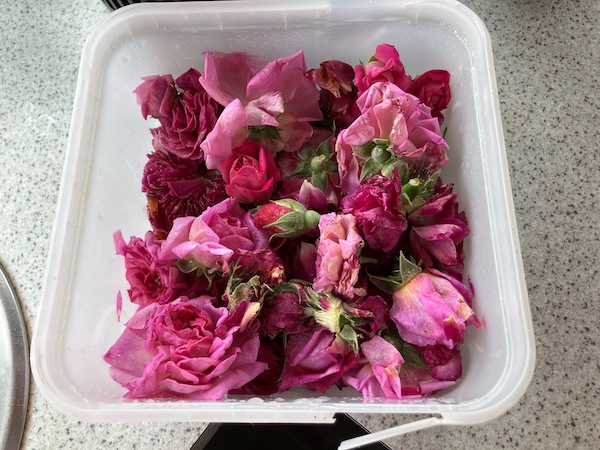
When flowering finished in mid-December, I defrosted my damask rose flowers and placed them inside my Air Still pot still for distillation. After filling the still with enough water to cover the roses, I began distilling the rose essential oil and rose water.
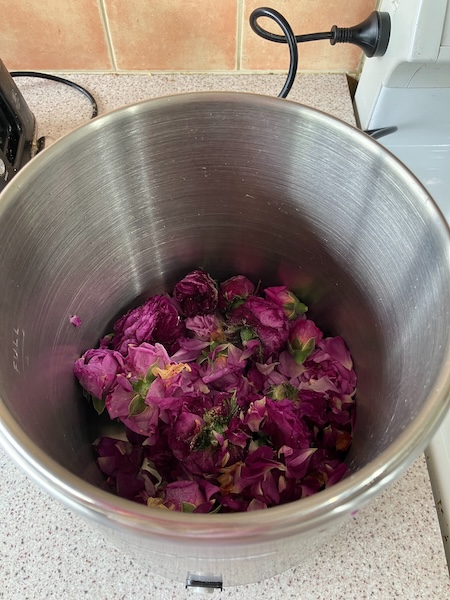
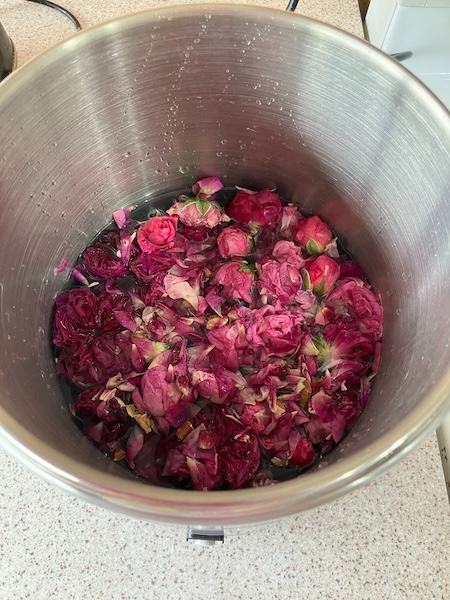
After about twenty minutes of heating, the strong scent of rose essential oil gases began filling the kitchen. A minute after that, the combined liquid of rose essential oil and rose water began exiting the pot still.
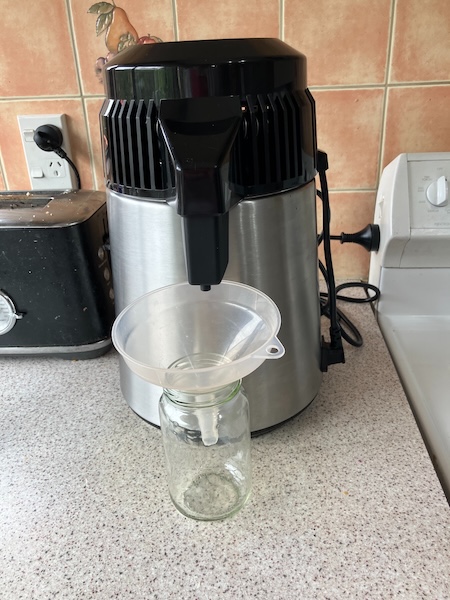
The distilling process took about an hour, and I was left with 700 mL of combined rose essential oil and rose water afterward. The amount of rose essential oil was tiny compared to the rose water, so I decided to leave the two combined for storage. I split the resultant rose water into two 350 mL containers, and gave one to my sister, who likes to make natural products for her home.

I'm really pleased with the resulting rose water, which smells lovely, and in the coming years as my rose bushes grow, I'll get bigger harvests of rose flowers each year. My plan with the rose water this year is to use it in my cold-processed soap recipe later on this summer.
Have a wonderful day
Julie-Ann
Want to discuss my post? Feel free to chat with me on Instagram or Mastodon or Bluesky.
Another New Rose Bush
Hello friends,
I rescued another rose bush from Mitre 10. The remaining rose bushes they have in stock are now reduced in price by 50%, and I couldn't help but pick up a climbing rose called Newsflash, for along our back garden fence. It is a bright, clear orange rose, with a pleasant light scent.

It's estimated to get approximately 2.8 metres long, and flowers repeatedly all summer long, and my plan is to train it in both directions along the fence to brighten up that area of the garden. As a bonus it is quite thorny, and it will deter the neighbour over our back fence who likes to come over the top of our side of the fence, and try and hack at our plants...


I'm really loving it's pop of colour in the back garden at the moment.
Have a wonderful day
Julie-Ann
Want to discuss my post? Feel free to chat with me on Instagram or Mastodon or Bluesky.




